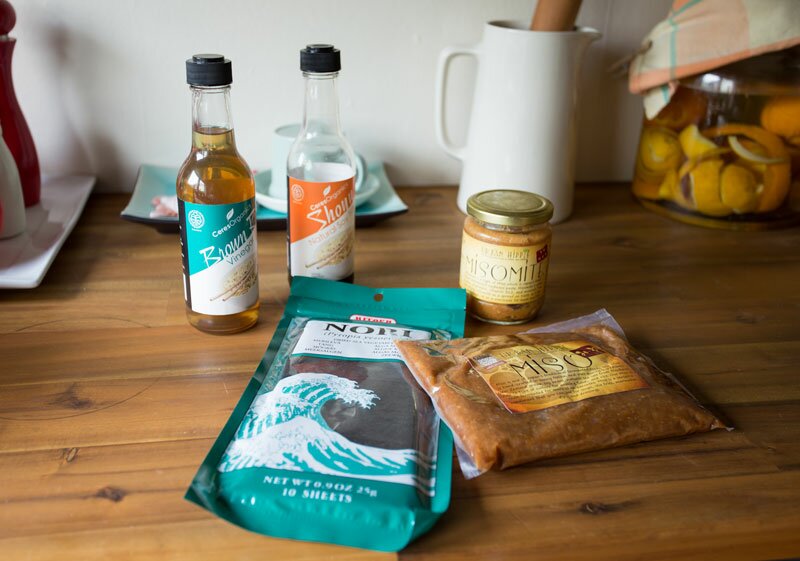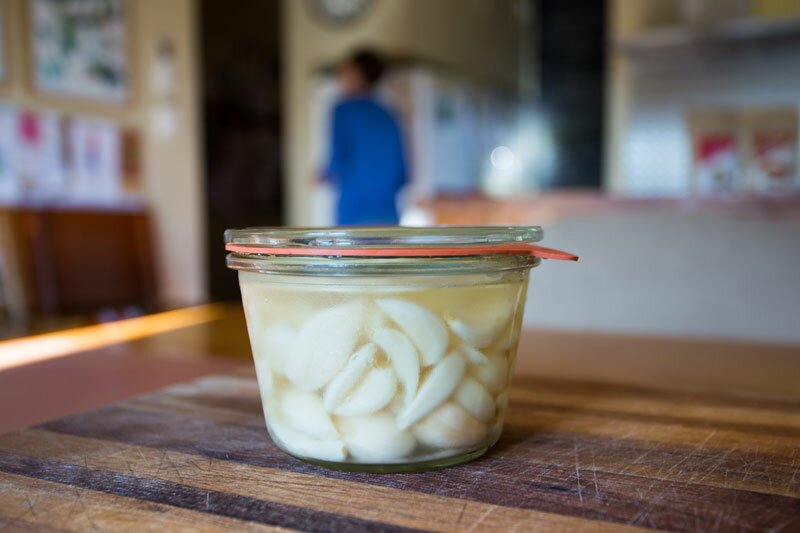If you’ve taken even the smallest interest in healthy eating over the past couple of years, you will have noticed that fermented foods are all the rage. Yoghurt as a source of probiotics is just so yesterday; now everyone’s talking about kombucha, kefir, kimchi and sauerkraut, and some of us are making them too. But perhaps you’re new to the healthy food scene, and you’re wondering what all the fuss is about? I thought I’d write a post explaining why I make and eat those fermented foods above, and why I try to get my whole family to eat a daily dose of something fermented.
I have the impression that the current buzz about fermented foods has come from two developments in recent times. One has been driven by ordinary people, some with unresolved chronic illnesses, who feel that something to do with our modern (western) diet and lifestyle just isn’t quite right. In spite of the abundance of food choices we now have, in spite of the excellent levels of hygiene we are practising, in spite of all of this advanced technology we have developed, in spite of the gazillions of sophisticated medicines we have available to us, many of us are still feeling either Not that awesome or Completely crappy, really. Even people who don’t consider themselves to be ‘sick’ are noticing they are ITCHY… lethargic… achy… chubby… tired… foggy… anxious… A lot of these symptoms can be alleviated (often only temporarily) with pharmaceuticals, but some of us are starting to wonder what the root cause of these annoying or sometimes debilitating symptoms is, in the hope that we can rid ourselves of them for once and for all. So we share stories, and experiment with changes that are within our control – such as our diet, for example. How interesting that so many people feel noticeably better for eliminating gluten from their diet! Or dairy. Or sugar. Or caffeine. Or all of them… So, what does that mean?
The other development has been happening in the realm of science-meets-medicine, where some fascinatingly new territory is being uncovered about bacteria. It turns out more than 95% of bacteria in our environment are GOOD! (Whoops, we thought they were baddies 🙁 ). And we are absolutely FULL of mostly-good and a-little-bit-bad bacteria, most of which reside in our gut, but also on our skin. And those bacteria play a key role in determining how healthy we are and how good we feel. Turns out, our insides are not actually empty when we are hungry, but rather, they are teeming with gazillions of different bacteria (up to 2kgs worth?!) – good and bad – which, when we are healthy, coexist along with naturally present yeasts, in perfect equilibrium inside of us. So then, what happens when we live a lifestyle that’s all about killing bacteria? Hmm…
I once did a little googling into candida (a naturally present yeast inside all of us that is much maligned by people who suffer the effects of candida overgrowth, aka “thrush”) and discovered that its main purpose seems to be to decompose our bodies when we die. Adequate levels of good bacteria should keep candida levels in check during our lifetime, but when our bacteria are decimated (for example, during a course of antibiotics) the yeast population can go berserk. It can be really hard to bring it down to healthy levels again, because yeast thrives on a diet of sugar. Which is basically what most of us are eating all the time these days… d’oh.
Introducing: FERMENTED FOOD. Fermented food is ALIVE, meaning it is full of beneficial bacteria that not only predigest the food, unlocking many nutrients and making them bioavailable to us, but it also fills our guts with good bacteria. Our predecessors (of every enduring culture) ate fermented food regularly because they were not equipped with refrigerators or freezers, vacuum sealed plastic bags, a huge array of synthetic preservatives and stabilisers, or epoxy resins and tin cans. Although fermentation was developed as a practical means of preserving food, the spin-off was that people of pre-processed food cultures were constantly replenishing their gut flora and boosting their immune system and overall health.
A lot of these traditionally fermented foods are still a huge part of our diets now. Japanese foods are full of ferments (my Japanese mum is so proud of the healthy Japanese diet!) – soy sauce, miso, rice vinegar, and sake are foods many of us Kiwis are familiar with. My Dutch ancestors consumed fermented beer, wine, cheeses, sauerkraut, bread, salamis, yoghurt – I consume all of the above, and have done so all my life! Unfortunately, almost none of those foods I have listed are still fermented in the traditional way. You have to look really hard for an un-pasteurised fermented version of any of those foods. Ordinary soy sauce is just a sugary, caramel-coloured, artificially flavoured and pasteurised substitute. Most modern breads are not fermented these days since the invention of instant yeast made things so much quicker and more convenient. Plus, they are made with highly processed ingredients and then stuffed with additives and preservatives. Most modern salamis and cured meats are also full of preservatives. Cheeses are usually pasteurised.
(By the way, synthetic preservatives do not make bacteria happy. That’s the whole point. Unfortunately, they don’t make the good bacteria inside us happy either 🙁 ).

So what can we do to get more fermented food into our diets then? While unpasteurised fermented food is available these days, you really have to look for it. And it’s up to the consumer to know the difference between ‘live’ and ‘dead’ food. You can buy real sauerkraut from health food shops and organic shops, but you need to read the labels and check it’s raw/unpasteurised. You can buy real soy sauce and miso (I get mine from Bin Inn or Village Organics) but you need to look for an ingredient called “Koji” (aka. Aspergillus oryzae) which is the fermentation culture. Until you are familiar with which products are the right ones, it takes a bit of effort initially. Also, the real thing is almost always expensive!!! Sometimes eye-wateringly so. There’s a reason why most people eat crap food most of the time: it’s cheap. So you need to either suck it up and say, “How much am I prepared to spend in order to feel AWESOME?” or….
…you could make your own! Well, in the case of soy sauce and miso, I doubt I’ll be making those at home. But homemade sauerkraut is so easy – and cheap! – to make, there is no reason not to really. There’s homemade yoghurt, or even easier, kefir. There’s sourdough bread – so easy! Or kombucha 🙂 (Read my blog posts, haha). Homemade ferments are naturally affordable because that was how people did it in the even the poorest times. Almost any vegetable can be fermented. I had a go at making fermented garlic earlier this year and although it was a pain peeling each and every clove, it now means I’m never out of garlic. One jar lasts for months! Something simple we do every night is to soak our oats in water with a couple of tablespoons of kefir before turning it into porridge in the morning. Making real food does take an investment of time, but for me it’s worth it because it’s empowering to know what we’re eating, how it’s made, and where it comes from. It also makes me feel (and look) really GOOD. And it tastes deeee-licious! 😀
If you’re not in the best condition and you’ve never eaten fermented food before, it is best to start reee-ally slow and let your body adjust to the change without too much stress. But that also means you have plenty of time to get your head around making the stuff too! I think that sourdough must be one of the easiest fermented foods to start with because a sourdough starter, once established, is so resilient that it can be revived from even a near-death state almost all the time. And bread is such a staple food for so many of us. If your guts can’t even tolerate sourdough bread, then maybe sauerkraut is the best one to start with. I understand that kraut juice is the gentlest probiotic and can be consumed by even the most damaged guts albeit in tiny amounts!
If you’d like to have a go at making your own fermented foods, check out the Mrs Goodness Shop! I’ve designed a kombucha kit, a fermenting kit, and a sourdough starter kit (among other Good things!). They all come with comprehensive instructions to make things easy for you 😉 .
If you’re interested in some of the ideas in this blog post, here are links to some interesting related (and random) articles:
Dr Mercola: 9 Ways That Eating Processed Food Made the World Sick and Fat
The difference between anti-microbials, preservatives, and antibiotics
Soy sauce: The good, the bad, and the surprisingly ugly
Dr Mercola: Why fermented soy is better
A list of fermented foods from around the world
And last but not least, a TED talk (I love TED talks!) you should watch if you have 18 minutes to spare: Bonnie Basler: How Bacteria “Talk”
